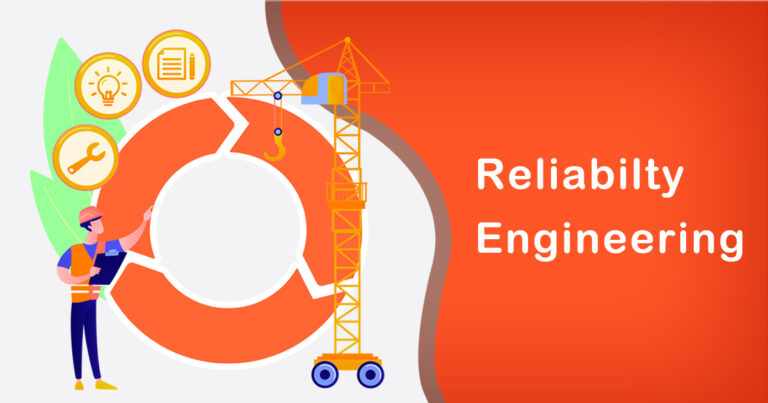Introduction
In the dynamic landscape of industrial operations, the term “asset uptime” holds paramount significance. It embodies the efficiency, reliability, and profitability of businesses across various sectors, from manufacturing to utilities. In the Indian context, where industries are thriving and digital transformation is gaining momentum, understanding what is asset uptime becomes imperative for sustained growth and competitiveness.
Defining Asset Uptime
Asset uptime refers to the duration in which a particular asset or machinery remains operational and productive, delivering its intended output without any unplanned downtime. It encompasses the overall availability and performance of assets, including machinery, equipment, facilities, and infrastructure, crucial for uninterrupted operations.
Key Components of Asset Uptime
Availability:
Availability denotes the percentage of time an asset is operational and ready for use. It factors in planned maintenance schedules, repair times, and any unexpected breakdowns. High availability signifies minimal downtime and optimal utilization of assets.
Reliability:
Reliability pertains to the consistency and dependability of assets in delivering desired outcomes over a specified period. Reliable assets exhibit minimal failure rates and perform consistently under varying operating conditions, fostering operational stability.
Maintainability:
Maintainability relates to the ease and efficiency of maintaining assets, including repair times, accessibility of spare parts, and preventive maintenance practices. Efficient maintenance processes enhance asset uptime by minimizing downtime during maintenance activities.
Significance of Asset Uptime
Enhanced Productivity:
Maximizing asset uptime directly translates to improved productivity and output. Operational continuity ensures seamless production processes, meeting customer demands and revenue targets efficiently.
Cost Optimization:
Reduced downtime and increased asset reliability lead to lower maintenance costs and operational expenses. By minimizing idle time and maximizing utilization, businesses can optimize resources and achieve higher returns on investment.
Competitive Advantage:
In today’s competitive landscape, organizations that prioritize asset uptime gain a competitive edge. Uninterrupted operations enable timely delivery of goods and services, fostering customer satisfaction and loyalty.
Challenges in Achieving Optimal Asset Uptime
Ageing Infrastructure:
Many industries in India grapple with ageing infrastructure, which poses challenges in maintaining high levels of asset uptime. Retrofitting existing assets and adopting predictive maintenance technologies becomes crucial to mitigate risks associated with ageing equipment.
Skills Shortage:
The shortage of skilled maintenance personnel and engineers exacerbates downtime issues. Investing in training and upskilling initiatives is essential to equip personnel with the necessary expertise to ensure optimal asset performance.
Technological Integration:
Integrating emerging technologies such as IoT (Internet of Things) and predictive analytics into existing infrastructure requires careful planning and investment. While these technologies offer insights for proactive maintenance, their implementation may encounter resistance and compatibility issues.
Strategies for Improving Asset Uptime
Predictive Maintenance:
Leveraging data analytics and IoT sensors, predictive maintenance predicts potential failures before they occur, enabling timely interventions and minimizing downtime.
Asset Performance Management:
Implementing comprehensive asset performance management systems facilitates real-time monitoring of asset health, enabling proactive maintenance and optimizing performance.
Investment in Infrastructure:
Upgrading and modernizing infrastructure with advanced technologies enhances asset reliability and extends their lifespan, contributing to improved uptime and operational efficiency.
Collaborative Partnerships:
Collaborating with OEMs (Original Equipment Manufacturers) and service providers for maintenance and support services ensures timely access to expertise and spare parts, minimizing downtime and enhancing asset reliability.
Conclusion
In the Indian industrial landscape, where the pursuit of operational excellence is paramount, asset uptime emerges as a critical metric for success. By prioritizing availability, reliability, and maintainability of assets, businesses can achieve higher productivity, cost optimization, and competitive advantage. Embracing technological advancements, fostering skill development, and adopting proactive maintenance strategies are imperative steps towards ensuring optimal asset uptime and driving sustainable growth in the dynamic market environment. Achieving optimal asset uptime requires a concerted effort from all stakeholders, including management, maintenance personnel, and technology partners. By recognizing the significance of asset uptime and implementing effective strategies, Indian industries can unleash their full potential, driving innovation, and staying ahead in the global marketplace.








